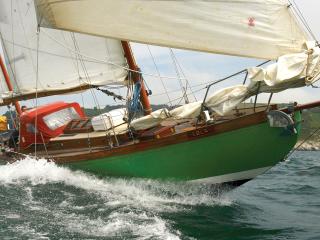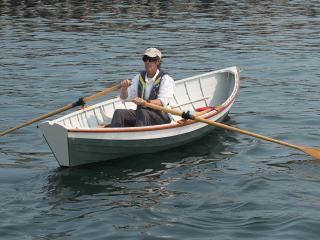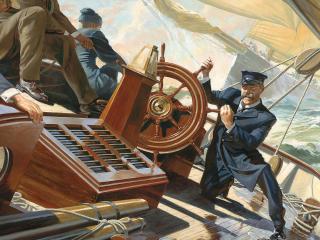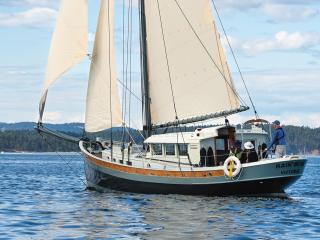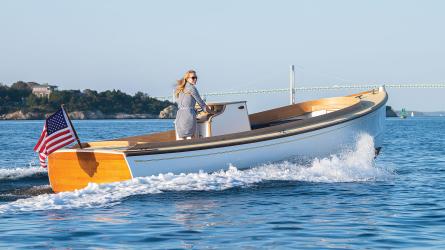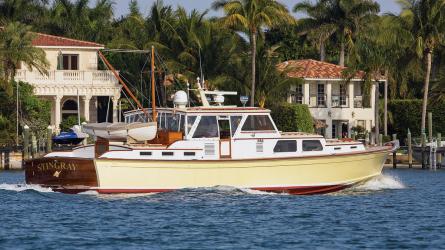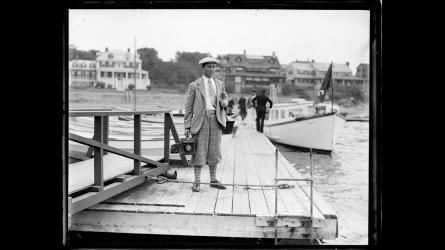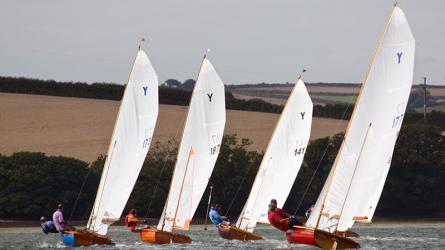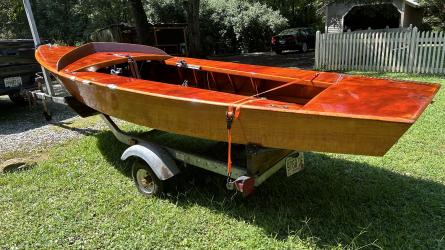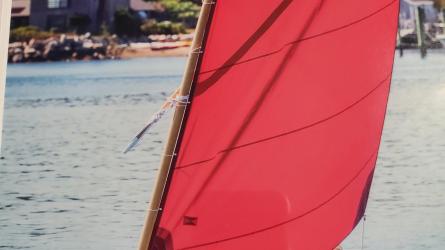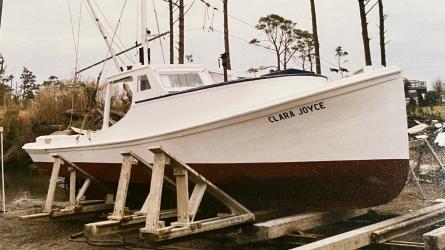November / December 2021
PATIENCE B Aground
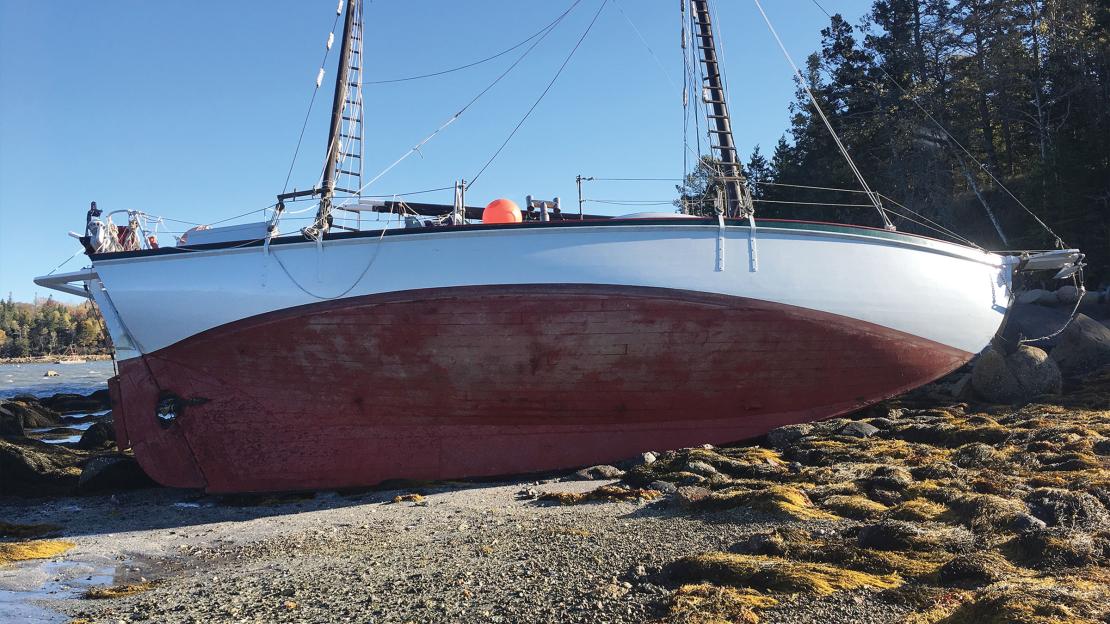
During her many years and passages, PATIENCE B survived two major gales, surfed down a 45’ wave, and narrowly dodged a few lightning strikes. But it was in her homeport of Brooklin, Maine, that her mooring line and lucky streak
finally broke.
PATIENCE B was set for her fall haulout on October 16, 2018, a Tuesday, at the afternoon high tide. The forecast was clear, with strong wind in the mix. After downrigging and neatly lashing the booms and gaffs to the cabin roof on Monday, I set off from our home on the Benjamin River in Sedgwick, Maine, and motored down Eggemoggin Reach to Center Harbor in Brooklin. I rowed ashore after the boat was carefully secured to the mooring on which she would spend the night, fondly looking back as she gently bobbed on her pennant and recalling some of the long voyages we had done.
At sea, the boat is a miraculous thing, this little concoction of wood gaily bouncing along the ocean, the great waves running with amazing speed under her as she gently and proudly settles on each crest. Perhaps there was a premonition as I remembered the dramatic photograph on the cover of Dr. Paul B. Sheldon’s 1973 book Lure of the Labrador, which shows a full-keeled wooden yacht cast high up on a gigantic rock on the Labrador coast. It is an unforgettable image and one that is often in the back of my mind during scary nights at sea or when leaving PATIENCE B on a mooring not her own. I headed home to review the final haulout and winterization details to finish in the morning.
PATIENCE B, a 36' ketch designed by William H. Hand, Jr. as FUNDULUS in 1912, was traditionally built in 1988 by Harry Bryan of Letete, New Brunswick. She was built of white-cedar planking over laminated white-oak frames, with black locust for the critical cabin corner posts and for deck cleats, blocks, and deadeyes. She is traditionally rigged with a gaff main and mizzen and tarred galvanized-steel wire standing rigging that is wormed, parceled and served, and annually coated with a mixture of pine tar and varnish.
To read the rest of this article:
Click the button below to log into your Digital Issue Access account.
No digital access? Subscribe or upgrade to a WoodenBoat Digital Subscription and finish reading this article as well as every article we have published for the past 50-years.
ACCESS TO EXPERIENCE
Subscribe Today
1 YEAR SUBSCRIPTION (6 ISSUES)
PLUS ACCESS TO MORE THAN 300 DIGITAL BACK ISSUES
DIGITAL $29.00
PRINT+DIGITAL $42.95
Subscribe
To read articles from previous issues, you can purchase the issue at The WoodenBoat Store link below.
 Purchase this issue from
Purchase this issue from
